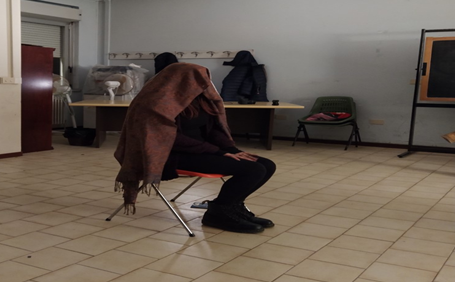Image Theatre is one of the techniques adopted during the labs of Bridging Culture Through Arts pilot. It’s about a performance exercise in which people do not use words or signs, but use their bodies and objects to communicate an idea and emotion. In this technique one person acts as a sculptor and moulds other people as they were statues to describe a situation.
That day, participants were asked to carry an object with them and explain why they were attached to it. The image theatre was used to see if, and how, a physical object could change in meaning across different cultures and people.
F., a young woman from Bangladesh, brought a ring which she had received as a present from a dearest friend of her and explained to the group that the ring always reminded her of this extremely important person of her life. The ring was chosen by the group as the central element of the Image theatre performance, which was and composed of a three-scene narrative.
F.’s ring was placed in the centre of the room and M. (a Pakistani guy) started his mise-en-scène: in the first one, he put a girl sit in the middle of the room with a thick veil covering her face and making her not visible; in the second one, M. jumped himself into the scene putting the ring on the girl’s finger; and only in the third scene, M. could take away the veil and see the girl’s face. The two people could finally look at each other.
This representation told a lot about some of the Middle Eastern cultures and traditions. M. put himself into the scene manifesting his roots.
Moreover, the ring, that represented for F. a symbol of friendship between two women, was turned into a symbol of wedding by M. This is a fundamental characteristic of this kind of activity that lays the ground for a serene coexistence of several meanings without conflict.

When the participants had the opportunity to re-stage the scenes, D., an Italian girl, re-proposed the same situation of the first scene of M. But in the second scene the ring was put on the woman’s finger and her veil lifted, and D. worked on the expressions of the two sculptures giving them a mix of surprise and scare. In the last scene, the woman ran away and the man chased her.
At the completion of the last scene, the audience and the protagonists of the story burst into a thunderous laughter, transforming an extremely delicate moment into a sort of comedy about the wedding, in which different cultures could meet and, through the game, dialogue without feeling criticized or attacked. It was really impressive to realize that strong and rigid cultural traditions, as imposed weddings are, could be questioned and peacefully discussed through irony.






Leave a Reply
Want to join the discussion?Feel free to contribute!